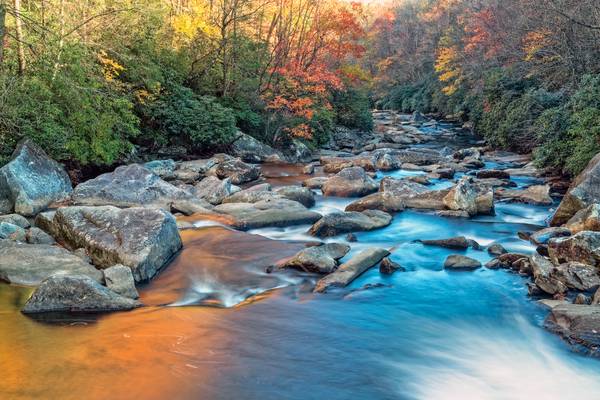
Rainbow Falls Trail

by Michael Kight
Have you heard of Arthur "Weegee" Fellig? He was a New York based freelance press photographer during the 1930s and 1940s who was known for consistently sharp and amazing photos. In the days before point-and-shoot technology, he had to have a foundational understanding between a lens' focal stop and the speed of the shutter... autofocus didn't exist either, but he had enough of an idea of camera physics to assure a great image every time he snapped an image. When asked of his secret to such great photography, his answer was, "Simple. f/8 and be there." As Shakespeare pointed out, “Brevity is the soul of wit.” There’s a whole lot packed in that brief statement.
While that answer may seem a bit cryptic, the philosophy behind it should be easily recognized by any photographer worth their salt. f/8 is a sharp and relatively fast lens aperture. On a fixed focused 35mm lens as was fitted to many a press camera back in the day, sharp focus was determined by a properly set lens stop… f/8 would bring anything from around 19 feet to infinity into focus. Essentially, “f/8” means that you should know your equipment, but what about the back half of that maxim? Weegee knew. As legend tells it, Arthur Fellig earned the nickname Weegee during his early career as a photographer in New York City. His apparent sixth sense for crime often led him to a scene well ahead of the police. Observers likened this sense, actually derived from tuning his radio to the police frequency, to the Ouija board, the popular fortune-telling game. Spelling it phonetically, Fellig took Weegee as his professional name… and it was the very definition of “be there.”
I don’t have a Ouija board, so to “be there” at specific camera subjects in the fickle weather of the Blue Ridge Mountains can be somewhat of a gamble on wasted time... as far as photography goes, that is. It's never truly a waste of time to hike these mountains. Fall of 2014 in the Blue Ridge was a cascade of one open blue-sky day after another, making good landscape photography a challenge. As I just happened to be near Rainbow Falls one late afternoon, so I headed to Gorges State Park here in North Carolina. It’s about a 4-mile roundtrip hike to the falls, with plenty to take note of along the way. The Horsepasture River plunges 150 feet at Rainbow Falls, so it’s a bit of a climb at the end of the hike there. As water crashes over the rock face of the enclosed area of the waterfall, it creates both wind and spray. That wind drives the spray up, and if the sun’s in the right spot, it creates a rainbow over the falls.
The problem this day was that I’d gotten there too late in the day for a rainbow… the sun was setting at the top of the ridge making light too contrastive for any good composition there. I just enjoyed the moment at the falls and rested a bit for the return without taking the camera out of the backpack… but I was thinking of some of the places I’d taken note of earlier. This image was taken a short way past the climb up to the falls, with the sun still parked on the ridge. The only place in direct sunlight here was the autumn forest canopy overhead… but it was reflecting beautifully in the river! In this place, there was little to no wind, so it could work out for a long exposure. I needed a long exposure to smooth out the rough water to pick up the color of both the canopy and the blue sky on the water. After a little rock hopping, I found the spot I wanted… “be there” accomplished. With the help of a neutral density filter and an aperture 2-stops open from full stop for sharpness and a 6-second exposure, “f/8” accomplished, obviously for a fine watercolor. “f/8 and be there” may be an old adage, but it still stands.
Thanks to all Phoide contributors to Rainbow Falls Trail!
Most notably Michael Kight.